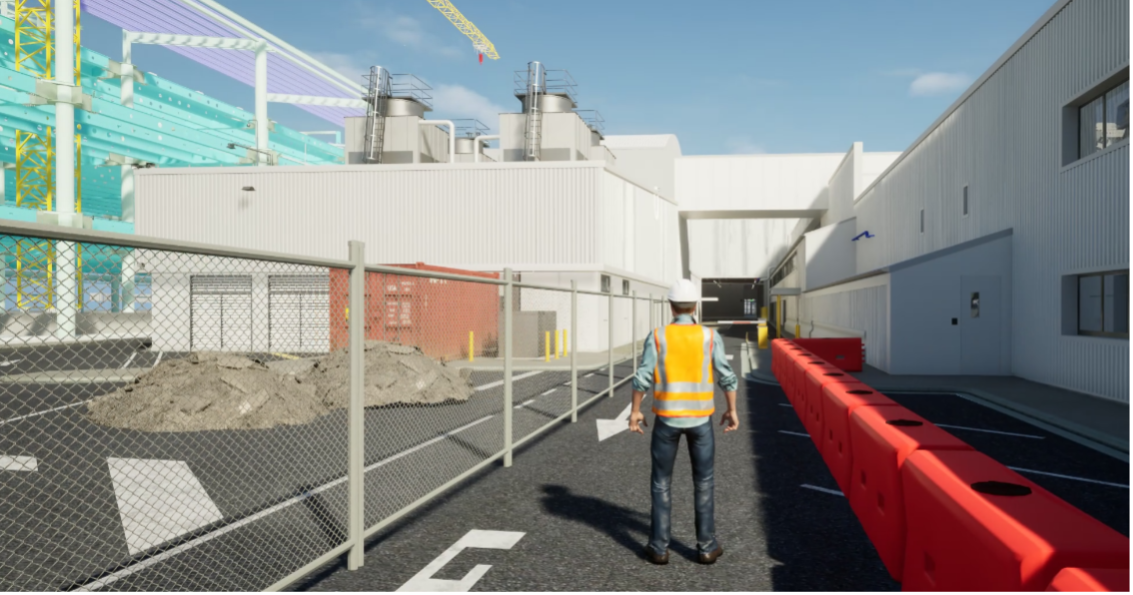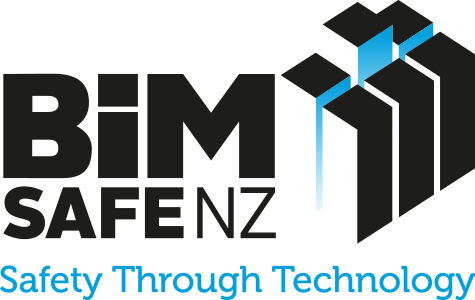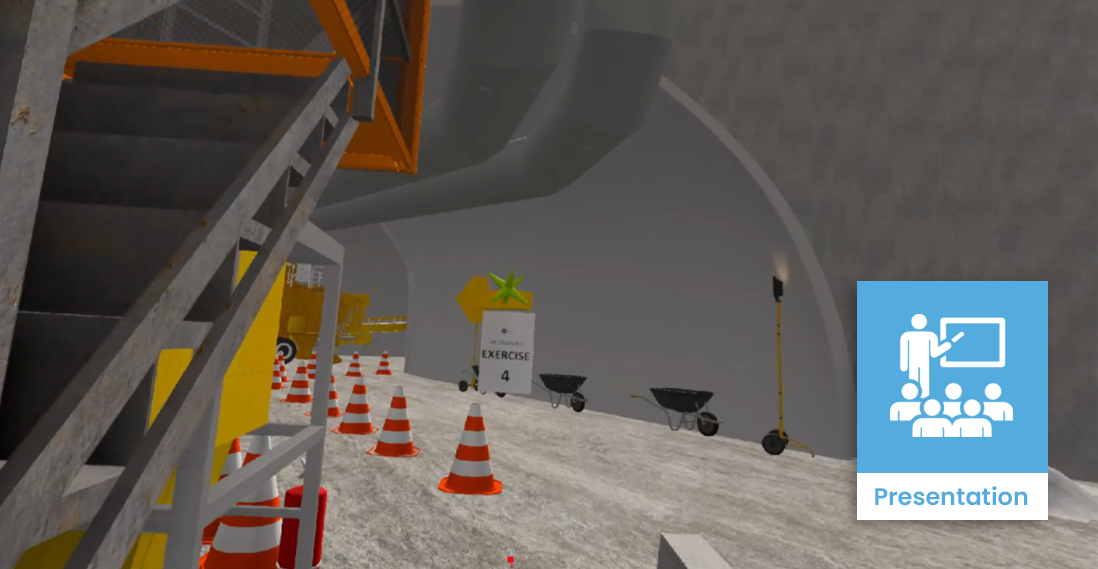Designer | Model visualisation for training and education
Description
BIM model visualisation uses a 3D representation of the site and surroundings to help familiarise designers with the project. The model can generate a virtual environment to orientate and train design teams, and help them understand potential health and safety risks and limitations before they access the actual site. Visualisation is particularly useful for sites with prohibited access or major potential risks due to active hazards.

Case studies
Uses and benefits for health and safety

Using models for training and education is most beneficial on sites with potential risks due to the nature of the facility, such as large, moving machinery, hazardous chemicals or fumes. In such cases, models can help personnel understand site conditions and complete health and safety training before actual site visits are necessary.
The client, who is typically the party that is most aware of the site’s hazards, usually initiates and drives the use of models for health and safety training and education. When this isn’t the case, the availability and quality of data, and methods of using it, may vary.
Clients are likely to pre-process the information into an interactive platform, while the design team is more likely to capture the raw information and navigate it manually.
Technology/techniques
For teams to successfully use models for health and safety training, site information has to be available in some form. Typically, this depends on the client’s maturity in capturing historic model information during other projects. This information may be in the form of:
- space
- 3D as-built models
- space
- point cloud scanned Information
- space
- drone lidar information
- space
For teams that want to use visualisation for training but lack 3D as-built models, point cloud and drone scans can be a good option. A small number of people can access and scan the site so a much larger number can access the information safely off-site.
To use this information for induction and training, it must be post-processed using software such as Unreal Engine and Unity to integrate the training information.
Model/data requirements
If a 3D model is available, the data requirements depend on how the project team intends to use the model. If they aim to make it interactive, where users can click on elements to view properties and information, this must be embedded in the model.
For example, fire safety training may contain information about types of fire extinguisher (foam, powder etc). If the purpose of the training is to show site dangers and movements, this will be captured in areas and element paths, which must be integrated into the platform. If the purpose is to explain high-level site conditions (in the case of just using a 3D point cloud) it may be acceptable that no data is required.
Teams should understand the purpose of the training and align the data requirements to suit. Ideally, this integrates into the client’s information requirements to assist future teams on-site.
Hardware and software requirements
Hardware and software requirements both depend on the complexity of the model and the types of files it uses. Some unprocessed file types, such as point clouds, require a high-spec computer and software capable of opening the file.
Once the information is processed into visualisation software, such as Unreal Engine or Unity, a typical computer should be able to open and use the file. However, additional graphics and memory may be necessary for the optimal experience.
Contract/procurement implications
The client’s understanding of the hazards and dangers on their active sites typically drives the requirement to use BIM for health and safety education. This makes the information available to teams from project kick off without any additional contract or procurement implications, other than the general understanding that some information may need to be confirmed on-site. If the training takes the form of an interactive model, the client will likely require it to be complete before they allow access to the site.
If the model is a design team initiative, capturing site information means engaging a surveyor to carry out the scans, which must be allowed in the fee. Regardless, there will always be unknowns that require site investigation.
Roles and responsibilities
Depending on the model, the following roles are important when developing BIM-enabled health and safety training for designers:
| Surveyor |
Responsible for capturing site conditions using drones or point cloud scanners. |
| Client |
If the model is used for training and onboarding, the client defines the overall process and ensures information is available by engaging others. They own the handover requirement expectations for information deliverables. |
| Visualisation specialist |
Creates the interactive environment for others to use. They require direction from the client about site conditions and information to be conveyed in the environment. |
| Design team |
Ensures the project makes the best use of the available data. They inform the project managers and client representatives when a review reveals any remaining risks or data gaps. |
| Project manager |
Interface between the client and design team. |
Training requirements
Training requirements depend on the format of the data used to create the model. If the information is provided in raw form (e.g., a point cloud):
- space
- Provide teams with training on the software that drives these data files. Model authoring software may be able to access this data, but other software can handle it far better.
- space
- Make teams aware of any potential gaps in the information (moving items, hidden items etc).
- space
If the information is provided as an interactive platform:
- space
- Ensure the platform provides clear navigation instructions and overall expectations for its use (e.g., using it for induction training).
- space
- If the platform prefers an augmented or virtual environment, make sure teams have access to the necessary hardware and software.
Future directions
As clients mature and their expectations drive digital deliverables, capturing asset and site conditions will become easier and training models will become more commonplace. This opens up BIM models for induction training, risk management and more effective health and safety training.

